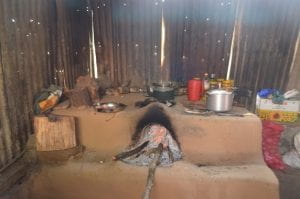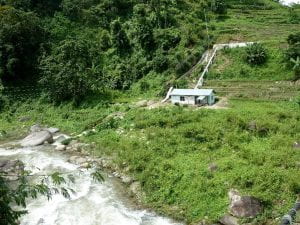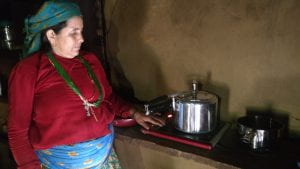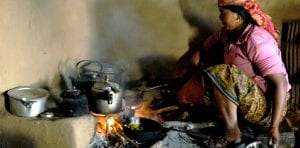Cooking With Electricity In Nepal
PhD student Will Clements tells us how switching from cooking with biomass to cooking with electricity is saving time and saving lives in Nepal.
Sustainable Development Goal 7 calls for affordable reliable access to modern energy. However, around 3 billion people still use biomass for cooking. Smoky kitchens – indoor air pollution due to biomass cooking emissions – account for the premature deaths of around 4 million people every year. The burden of firewood collection almost always falls on women and girls, who must often travel long distances exposed to the risk of physical and sexual violence. The gravity of the problem is clear.

Electric cooking is a safe, clean alternative which reduces greenhouse gas emissions and frees up time so that women and girls can work, study and spend more time doing what they want.
In Nepal, many off-grid rural communities are powered by micro-hydropower (MHP) mini-grids, which are capable of providing electricity to hundreds or thousands of households, but often operate close to full capacity at peak times and are subject to brownouts and blackouts.
A project to investigate electric cooking in Nepali mini-grids was implemented in the summer of 2018 by a collaboration between Kathmandu Alternative Power and Energy Group (KAPEG), People Energy and Environment Development Association (PEEDA) and the University of Bristol in a rural village called Simli in Western Nepal. Data on what, when and how ten families cooked was recorded for a month, at first with their wood-burning stoves, and then with electric hobs after they had received training on how to use them.

When cooked with firewood, a typical meal of dal and rice required an average of 12 kWh of energy for five people, which is around the energy consumption of a typical kettle if used continuously for six hours! On the other hand, when cooked on the induction hobs this figure was just 0.5 kWh, around a third of the energy consumed when you have a hot shower for 10 minutes.
However, even at this high efficiency, there was insufficient spare power in the mini-grid for all the participants to cook at the same time, so they experienced power cuts which led to undercooked food and hungry families.
Many participants reverted to their wood stoves when the electricity supply failed them, and this with only ten of 450 households in the village trying to cook with electricity. The project highlighted the key challenge – how can hundreds of families cook with electricity on mini-grids with limited power?
In April 2019, the £39.8 million DFID funded Modern Energy Cooking Services (MECS) programme launched. The MECS Challenge Fund supported the Nepal and Bristol collaboration to investigate off-grid MHP cooking in Nepal further.

The project expands on the previous project by refining data collection methods to obtain high quality data on both Nepali cooking practices and MHP behaviour, understanding and assessing the potential and effect of electric cooking on Nepali MHP mini-grids, and using the collected data to investigate how batteries could be used to enable the cooking load to be averaged throughout the day so that many more families can cook with electricity on limited power grids.
MHP differs greatly from solar PV and wind power in that it produces constant power throughout the day and night, providing an unexplored prospect for electric cooking. Furthermore, this 24/7 nature of MHP means that there is a lot of unused energy generated during the night and off-peak periods which could be used for cooking, if it could be stored. Therefore, battery-powered cooking is at the forefront of this project.

Collected data will be used to facilitate a design methodology for a battery electric cooking system for future projects, evaluating size, location and distribution of storage, as well as required changes to the mini-grid infrastructure.
Furthermore, a battery cooking laboratory is being set up in the PEEDA office in Kathmandu to investigate the technical challenges of cooking Nepali meals from batteries.
The baseline phase – where participants’ usual cooking is recorded for two weeks – is already complete and preparations for the transition phase are underway where electric stoves are given to participants and they are trained on how to cook with them.
We will be heading to Kathmandu to help with the preparations, and the team will shortly begin the next phase in Tari, Solukhumbu, Eastern Nepal.
The project will continue the journey towards enabling widespread adoption of electric cooking in Nepali MHP mini-grids, the wider Nepali national grid and grids of all sizes across the world.
Author: Will Clements Will studied Engineering Design at Bristol University and, after volunteering with Balloon Ventures as part of the International Citizen Service, returned for a PhD with the Electrical Energy Management Research Group supervised by Dr Sam Williamson. Will is working to enable widespread adoption of electric cooking in developing communities, focusing on mini-grids in Nepal.
The opinions expressed in this blog are those of the author and do not necessarily reflect the official policy or position of UKAid.



